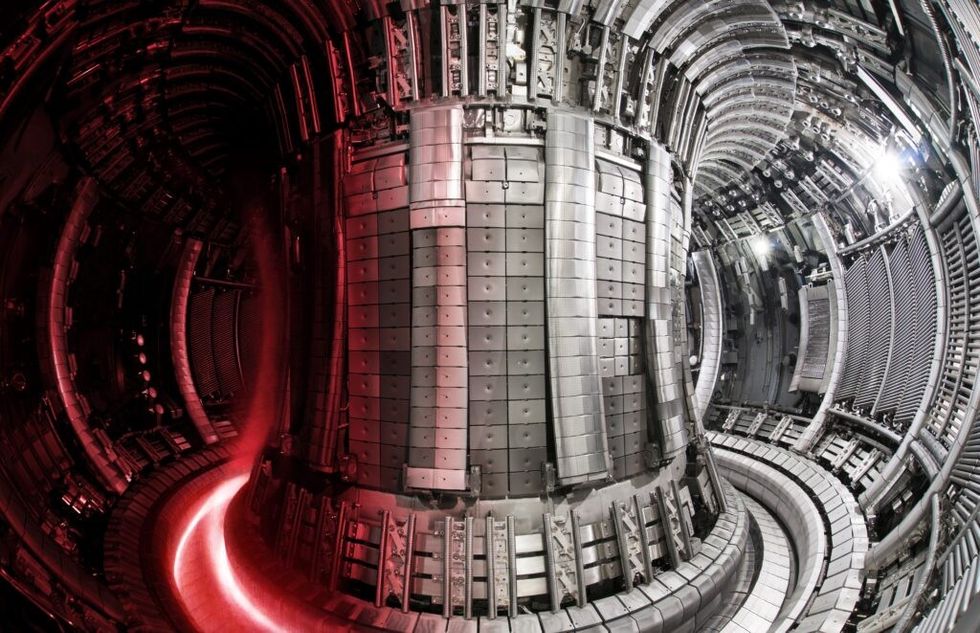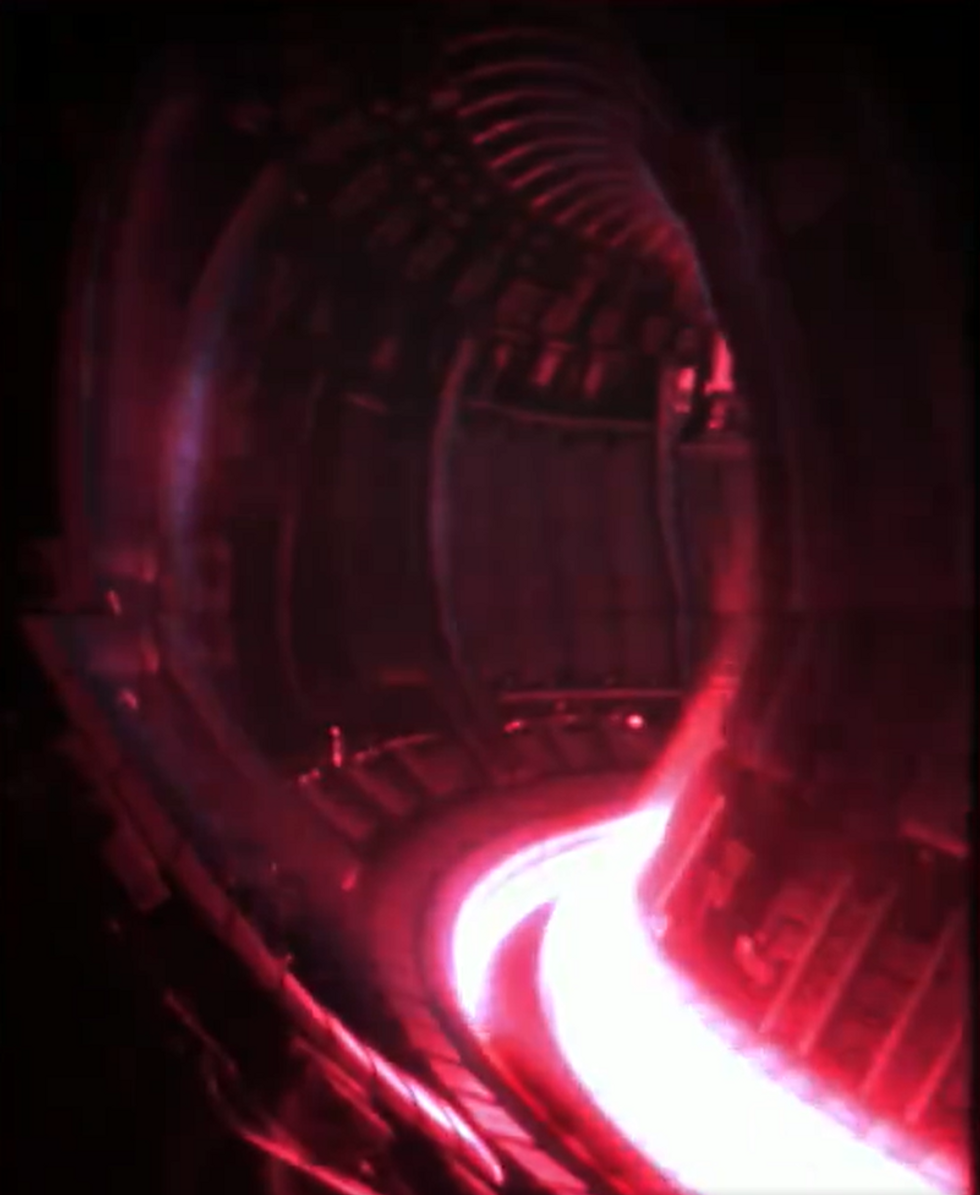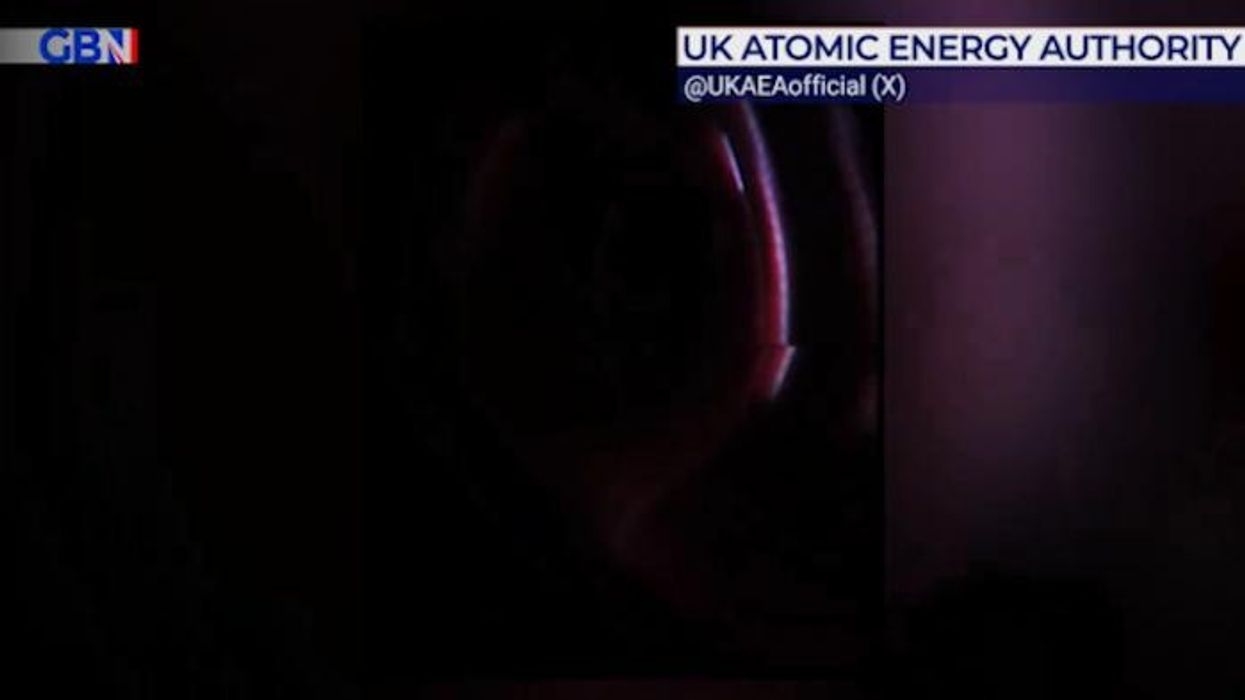WATCH: British nuclear reactor sets new world record in landmark fusion reaction

The experiment is a major breakthrough for a type of energy the UK hopes will power the national grid by the 2040s
Don't Miss
Most Read
A record-setting nuclear power breakthrough which could herald the reliable generation of fusion energy has been made by a UK-based international team of scientists.
The experiment was carried out in the Joint European Torus (JET), a fusion machine just outside Oxford, and is “a significant milestone in the field of fusion science and engineering”, UK authorities have said.
A video posted by the UK Atomic Energy Authority (UKAEA) showed the moment high fusion power was “consistently produced” for five seconds, churning a record 69 megajoules from a mere 0.2 milligrams of fuel.
That’s enough energy to boil over 1,000 cups of tea – all from fuel weighing less than a snowflake.

Inside the JET fusion reactor EUROfusion
|EUROfusion
The record was set by a team of scientists from the UK, Ukraine, Switzerland and the EU at the JET.
A statement from the UKAEA said: “Over 300 scientists and engineers from EUROfusion – a consortium of researchers across Europe, contributed to these landmark experiments at the site in Oxford, showcasing the unparalleled dedication and effectiveness of the international team at JET.
“The results solidify JET’s pivotal role in advancing safe, low-carbon, and sustainable fusion energy.”
UK Minister for Nuclear and Networks, Andrew Bowie, said: “JET’s final fusion experiment is a fitting swansong after all the groundbreaking work that has gone into the project since 1983.
LATEST DEVELOPMENTS:

High fusion power was “consistently produced” for five seconds, churning a record 69 megajoules from a mere 0.2 milligrams of fuel
|UK Atomic Energy Authority
“We are closer to fusion energy than ever before thanks to the international team of scientists and engineers in Oxfordshire.
“The work doesn’t stop here. Our Fusion Futures programme has committed £650 million to invest in research and facilities, cementing the UK’s position as a global fusion hub.”
Professor Ambrogio Fasoli, Programme Manager (CEO) at EUROfusion, said: “Our successful demonstration… instil[s] greater confidence in the development of fusion energy.
“Beyond setting a new record, we achieved things we’ve never done before and deepened our understanding of fusion physics.”
This experiment was the machine’s final run out – the doughnut-shaped JET, known as a tokamak, is set to be replaced by another UK programme: the Spherical Tokamak for Energy Production (STEP) in Nottinghamshire.
The British government will be hoping STEP can actually provide power to the national grid, with the project slated to contribute fusion energy by the 2040s.
The JET has been key in developing nuclear fusion research – producing energy by smashing atoms together, rather than the commonly-used fission which rips them apart.
Nuclear fusion is not in use in any mainstream power station, and currently requires more energy to produce than it produces itself – the JET has to be heated to over 13million degrees in order to be successful.
The machine works by fusing deuterium and tritium – variants of hydrogen – together in a plasma (seen burning pink in the video) to produce helium, alongside “vast amounts of energy”.
UKAEA’s CEO Professor Sir Ian Chapman said the JET’s legacy “will be pervasive” and has a “critical role in bringing us closer to a safe and sustainable future”.











